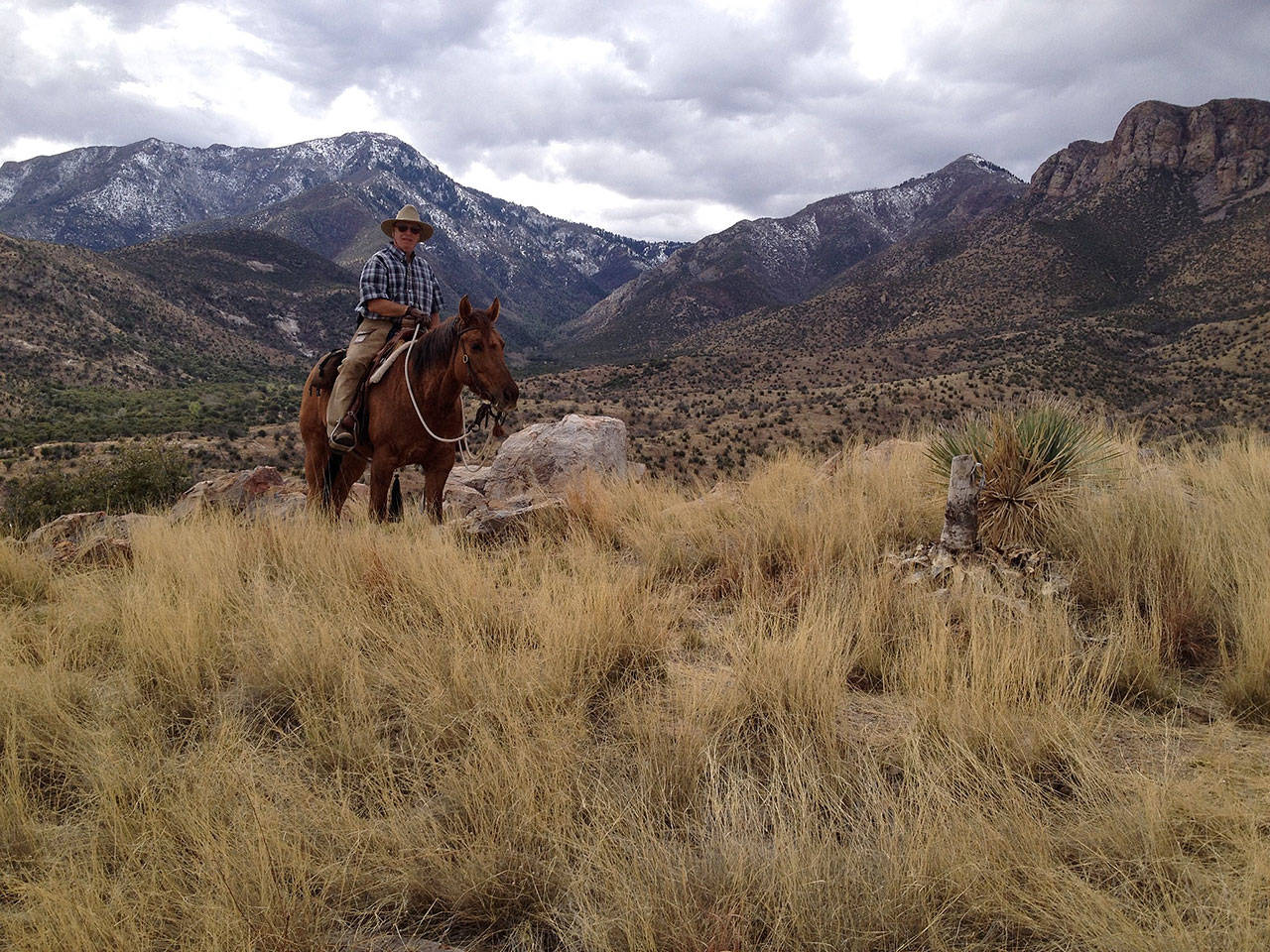When Coupeville residents Paula and Tim Keohane were on one of their frequent trips to Arizona a few years ago, they realized there were large stretches of the state they knew nothing about.
The mysterious area that first came to mind was the United States-Mexico border. What did it look like? What was the landscape like? Is there a wall?
They decided to see for themselves. What they found, to their surprise, were portions of an existing border wall and a beautifully rugged natural landscape. They simply had to document what they saw, and they’ve returned to share their experience on the borderlands.
“We decided to get off the roads and trails and drive as far out there as we could and take our horses for some trekking,” Paula Keohane said. “There was a motivation to see what the land and the border itself looked like. We generally weren’t there for political reasons, but there was a huge sense of curiosity and that only added to it.”
The photos the Keohanes returned with will be shown to the public at Unitarian Universalist Congregation of Whidbey Island, located in Freeland. The exhibit, “Border — No Wall: Seeing for Ourselves,” starts this Sunday with an opening reception set for 11 a.m. The Keohanes will be present to discuss their photos and experiences, and hope to hear others’ experiences in the borderlands. The exhibit will be displayed for two months through December.
According to Paula Keohane, this isn’t an art exhibit. She and her husband don’t claim to be photographers, rather they see this as a chance to educate and share stories of the border.
About 40 photos will be on display, illustrating desert landscape, mountainous terrain and existing pieces of a border wall. The photos include shots from the Nogales, Ariz. area and New Mexico they took from horseback, their form of off-roading. The exhibit includes “items and artifacts” from the border contributed from community members who are looking to tell their own border experiences. Each photo has an attached story.
“It’s less of an exhibit and more of a visual story of their time down there,” Carol Bingham, a member of the church’s Visual Arts Committee, said. “Their main mission is to stimulate people’s interest and have people share their stories, pictures and experiences of the border.”
While on their journey in February, the Keohanes got insight into border patrol and how extensive it is in the area. According to Paula Keohane, there was “quite a bit” of surveillance they ran into: metal fences that have slits people can see through, technological surveillance such as motion sensors, numerous border patrol towers and even a blimp serving as eyes in the sky. They even tested the border patrol’s reaction time, as Tim Keohane touched the border fence. An officer arrived in a vehicle “within 30 seconds,” he says, before recognizing the Keohanes from their earlier trekking.
“In a 12-mile stretch, we counted 11 border patrol installations of some kind, either vehicle, tech surveillance or the wall itself,” Paula Keohane said. “It made me wonder, ‘do people think this is inadequate?’”
The barrier is located in both urban and uninhabited sections of the border where the highest concentration of illegal crossings have been reported. There are structures located in cities such as San Diego, Calif., Nogales, Ariz., El Paso, Texas and Brownsville, Texas. There is currently almost 700 miles of fencing, which ranges in height and construction materials.
Besides the border structure itself, the Keohanes were struck by the region’s natural beauty. They were expecting a barren desert landscape, but that’s not what they saw. On their travels, they traversed 9,000 feet above sea level in Arizona’s Huachuca Mountains, which touch the border. They saw snow-capped peaks and rivers that had water flowing year round.
It took them by surprise.
Yet, they hardly found anyone else during their time along the border. It’s a region they believe is under-appreciated by Americans, who often have many misconceptions about the area. They hope to use their photos to pique South Whidbey’s interest in order to change that.
“We were simply struck by how beautiful the land is,” Paula Keohane said. “It’s not this desperate, desolate and lawless place. There’s a lot going on, there’s a lot to see and it’ll likely surprise people who know nothing about it. It definitely surprised us.”


